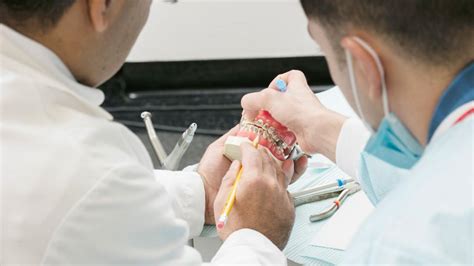Orthodontists are dental specialists who focus on diagnosing, preventing, and treating dental and facial irregularities. They use a variety of techniques to align teeth, correct bites, and improve the overall appearance of the smile. To become an orthodontist, you typically need a bachelor’s degree, a Doctor of Dental Surgery (DDS) or Doctor of Dental Medicine (DMD) degree, and an orthodontic residency program.

Bachelor’s Degree
The first step to becoming an orthodontist is to earn a bachelor’s degree. While there is no specific major required for orthodontics, most students choose to major in biology, chemistry, or physics. These majors provide a strong foundation in the sciences and math, which are essential for success in dental school.
Dental School
After completing a bachelor’s degree, you must attend dental school to earn a DDS or DMD degree. Dental school is a four-year program that includes coursework in anatomy, physiology, pharmacology, and other dental-related subjects. You will also complete clinical rotations in various dental specialties, including orthodontics.
Orthodontic Residency Program
After graduating from dental school, you need to complete an orthodontic residency program. These programs are typically two to three years in length and provide specialized training in orthodontics. You will learn about various orthodontic techniques, including braces, aligners, and retainers. You will also gain experience in diagnosing and treating a variety of dental and facial irregularities.
Board Certification
Once you have completed an orthodontic residency program, you are eligible to take the American Board of Orthodontics (ABO) certification exam. The ABO is a voluntary organization that certifies orthodontists who have demonstrated a high level of knowledge and skill in orthodontics. Board certification is not required to practice orthodontics, but it is a highly respected credential in the field.
Continuing Education
Orthodontics is a constantly evolving field, so it is important for orthodontists to continue their education throughout their careers. Orthodontists can attend continuing education courses, read journals, and participate in research to stay up-to-date on the latest advances in orthodontics.
Career Outlook for Orthodontists
The job outlook for orthodontists is excellent. According to the Bureau of Labor Statistics, employment of orthodontists is projected to grow by 11% from 2019 to 2029. This growth is expected to be driven by increasing demand for orthodontic services from an aging population and a growing number of people seeking to improve their smiles.
Salary for Orthodontists
The median annual salary for orthodontists was $237,710 in May 2020. The lowest 10% of earners made less than $114,070, and the highest 10% of earners made more than $420,130.
Conclusion
If you are interested in a career in orthodontics, you need to be prepared to invest a significant amount of time and money in your education. However, the rewards of a career in orthodontics can be great, including the opportunity to make a real difference in the lives of your patients.
Frequently Asked Questions (6-8)
1. What is the difference between an orthodontist and a dentist?
Orthodontists are dental specialists who focus on diagnosing, preventing, and treating dental and facial irregularities. General dentists provide a wide range of dental services, including fillings, crowns, and bridges.
2. How long does it take to become an orthodontist?
It typically takes 11 to 13 years to become an orthodontist. This includes four years of college, four years of dental school, and two to three years of orthodontic residency.
3. Is orthodontics a good career?
Orthodontics is a rewarding career that offers the opportunity to make a real difference in the lives of your patients. Orthodontists enjoy a high salary and excellent job security.
4. What is the average salary for an orthodontist?
The median annual salary for orthodontists was $237,710 in May 2020.
5. What is the job outlook for orthodontists?
The job outlook for orthodontists is excellent. Employment of orthodontists is projected to grow by 11% from 2019 to 2029.
6. What are the steps to becoming an orthodontist?
To become an orthodontist, you need to complete a bachelor’s degree, a DDS or DMD degree, and an orthodontic residency program. You may also choose to become board certified by the American Board of Orthodontics.
7. What is the cost of orthodontic school?
The cost of orthodontic school varies depending on the program you choose. However, you can expect to pay between $100,000 and $300,000 for tuition and fees.
8. What is the best way to prepare for orthodontic school?
The best way to prepare for orthodontic school is to earn a strong undergraduate degree in biology, chemistry, or physics. You should also make sure to take the DAT (Dental Admission Test) and score well.
